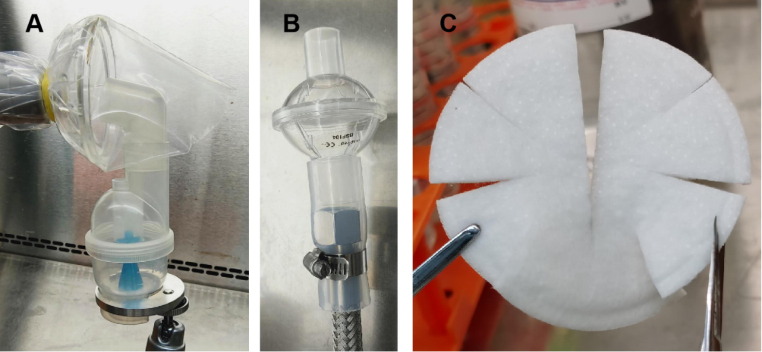Aerosol transmission is an important disease transmission route and has been especially pertinent to hospital and biosafety laboratories during the SARS-CoV-2 pandemic. The thermal resistance of airborne SARS-CoV-2 is lower than that of Bacillus subtilis spores, which are often used to test the effectiveness of SARS-CoV-2 and other pathogen disinfection methods. Herein, we propose a new method to test the disinfection ability of a flowing air disinfector (a digital electromagnetic induction air heater) using B. subtilis spores. The study provides an alternative air disinfection test method. The new test system combined an aerosol generator and a respiratory filter designed in-house and could effectively recover spores on the filter membrane at the air outlet after passing through the flowing air disinfector. The total number of bacterial spores used in the test was within the range of 5 × 105–5 × 106 colony-forming units (CFUs) specified in the technical standard for disinfection. The calculation was based on the calculation method in Air Disinfection Effect Appraisal Test in Technical Standard for Disinfection (2002 Edition). At an air speed of 3.5 m/s, we used a digital electromagnetic induction air heater to disinfect flowing air containing 4.100 × 106 CFUs of B. subtilis spores and determined that the minimum disinfection temperature was 350 °C for a killing rate of 99.99%. At 400 °C, additional experiments using higher spore concentrations (4.700 × 106 ± 1.871 × 105 CFU) and a higher airspeed (4 m/s) showed that the killing rate remained>99.99%. B. subtilis spores, as a biological indicator for testing the efficiency of dry-heat sterilization, were killed by the high temperatures used in this system. The proposed method used to test the flowing air disinfector is simple, stable, and effective. This study provides a reference for the development of test systems that can assess the disinfection ability of flowing air disinfectors.




